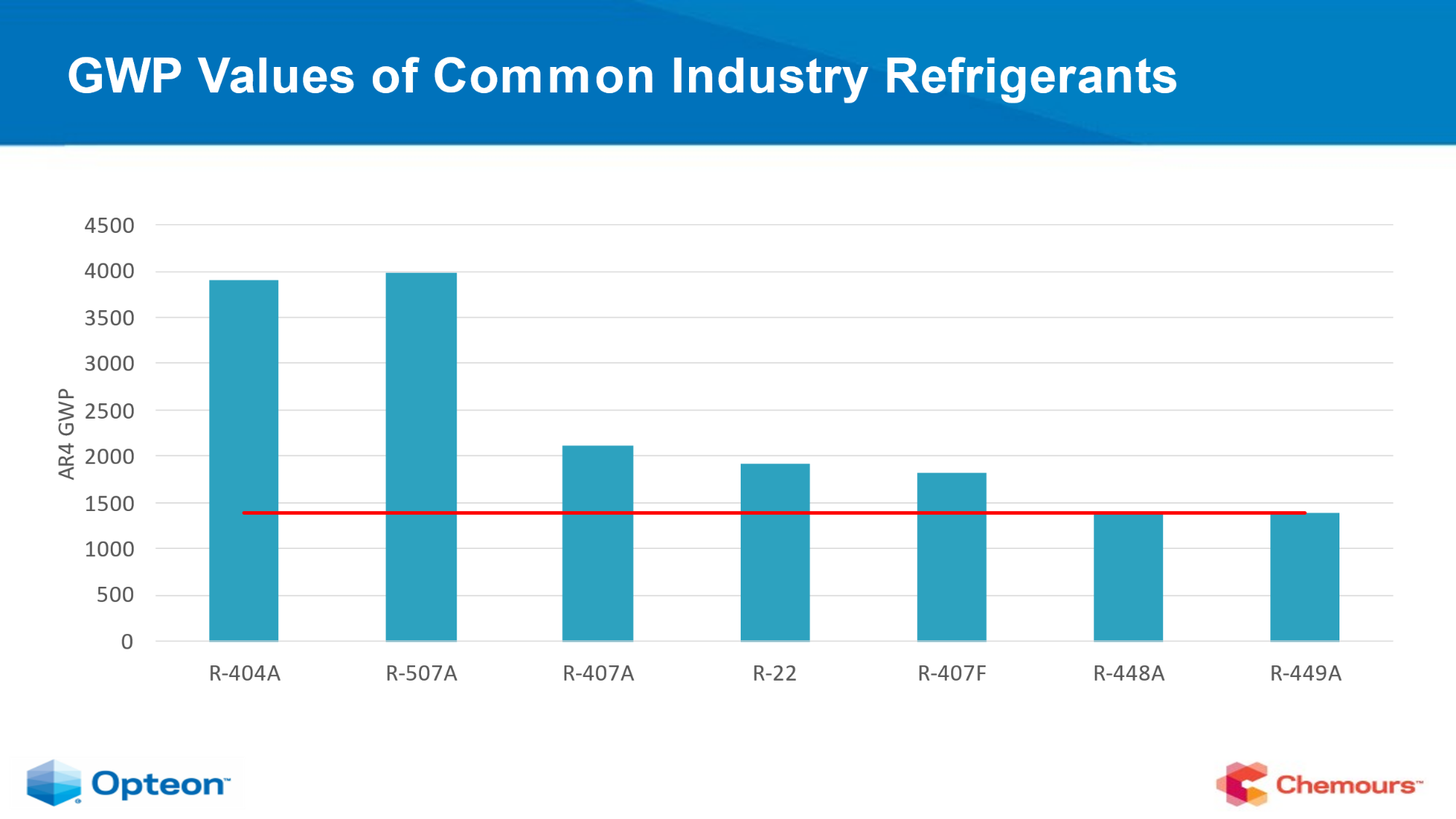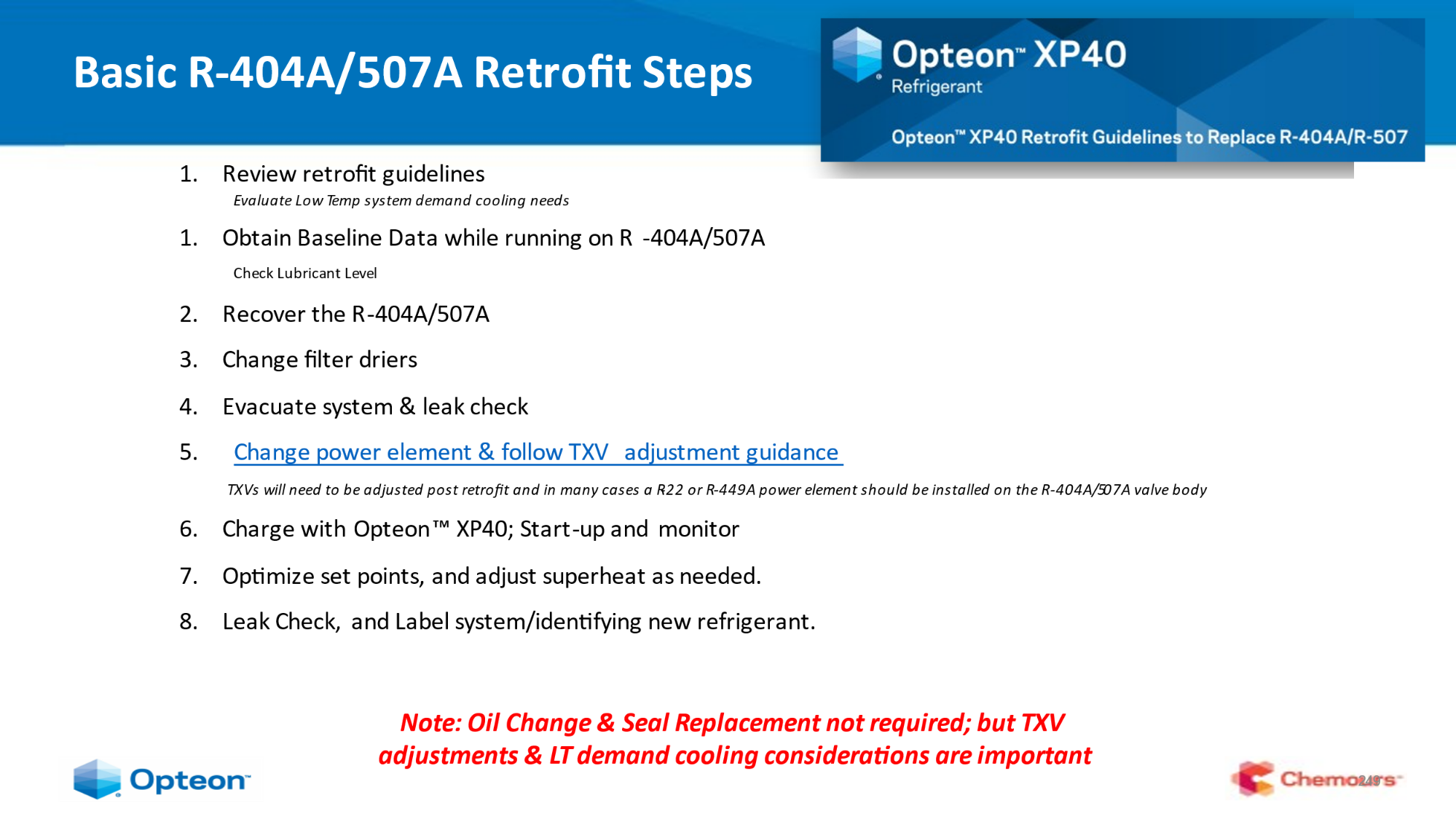Get Tech Tips
Subscribe to free tech tips.
Retrofitting Existing R-404A/R-507A Systems
This article was written by Don Gillis with Chemours. Thanks, Don!
With the American Innovation Act (The AIM Act) in place and the reduction of the supply of hydrofluorocarbons (HFCs) in effect, the need to retrofit systems with lower global warming potential (GWP) refrigerants will become commonplace in the very near future. So, what does the AIM act mean to you?
Simply put, the AIM Act directs EPA to address HFC by phasing down HFC production and consumption, maximizing reclamation, minimizing releases from equipment, and facilitating the transition to next-generation technologies through sector-based restrictions.
I know what you’re thinking. “Yes, Don, but what does it mean to me, the contractor?” Well, when the distribution of higher-GWP refrigerants like R-404A is scaled back, those refrigerants will be produced in far lower volumes, resulting in potential changes to the pricing and availability of product.

So, what are we going to do with those existing systems that are still working fine and doing the job? I mean, we’re not going to be tearing out all those new systems and starting over, right? The answer is no. You will start to see the industry transitioning to products like R-449A, or R-448A, all of which are classified as A1 refrigerants by ASHRAE. The silver lining here with changing over to R-449A from R-404A is, of course, improved performance and reduced environmental impact, but the ease of transition makes it a “win-win.”

Look, we already have POE oil in the system, so there is no need for an oil change and no need for critical elastomeric seals (O-rings). With R-449A having a low GWP of ~1396 compared to R-404A at ~3922, well, you’ve now extended the life of that equipment. NOTE: It is always good practice to change the oil and install a new liquid line filter drier if the POE has been exposed to air for an extended length of time. Keep in mind that POE is very hygroscopic and will absorb moisture quickly, causing copper plating and severe damage to the system.
Now, what will you need to change? Well, in most cases, you’ll just have to change the powerhead of the TXV; you can choose to change the entire TXV if you like or just the powerhead. The powerhead can either be an R-22 or an R-449A head. Anytime you convert any system over to a new refrigerant, monitor the system and adjust as needed.

Oh, one last thing:
Component manufacturers have approved refrigerants like R-449A so that they can be used in new installations! For more information about refrigerants like R-449A, visit opteon.com. Thanks, everyone!
—Don Gillis











Comments
Planned obsolescence, pure and simple. This is getting old.
Planned obsolescence, pure and simple. This is getting old.
Words cannot describe how grateful I am for that insight! Very informative. I’m an aspiring hvac tech and I’m continuously learning more and more about the industry, so I appreciate this. I’m currently trying to find ways to take my test for the EPA universal certification online. Are there any sites that would allow me to take or online? Please inform if you know of any. And thanks again
Words cannot describe how grateful I am for that insight! Very informative. I’m an aspiring hvac tech and I’m continuously learning more and more about the industry, so I appreciate this. I’m currently trying to find ways to take my test for the EPA universal certification online. Are there any sites that would allow me to take or online? Please inform if you know of any. And thanks again
To leave a comment, you need to log in.
Log In